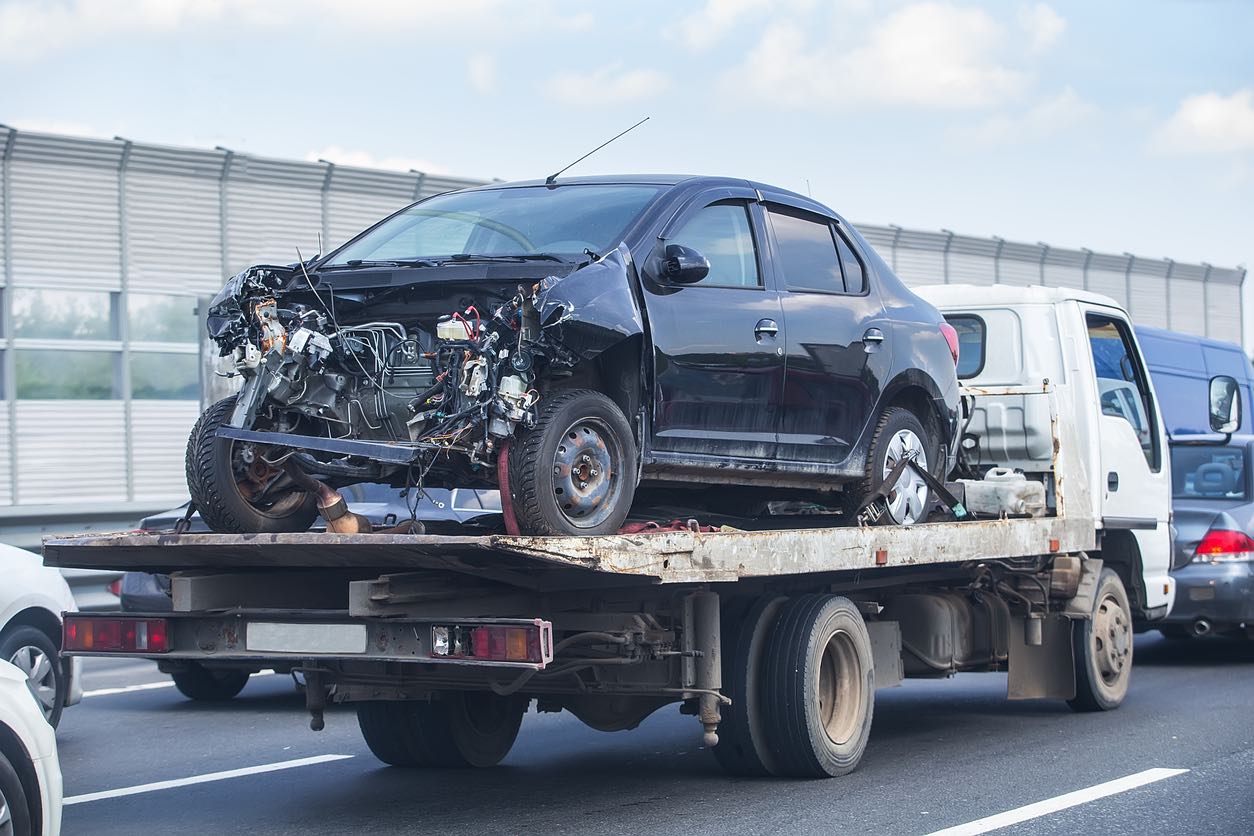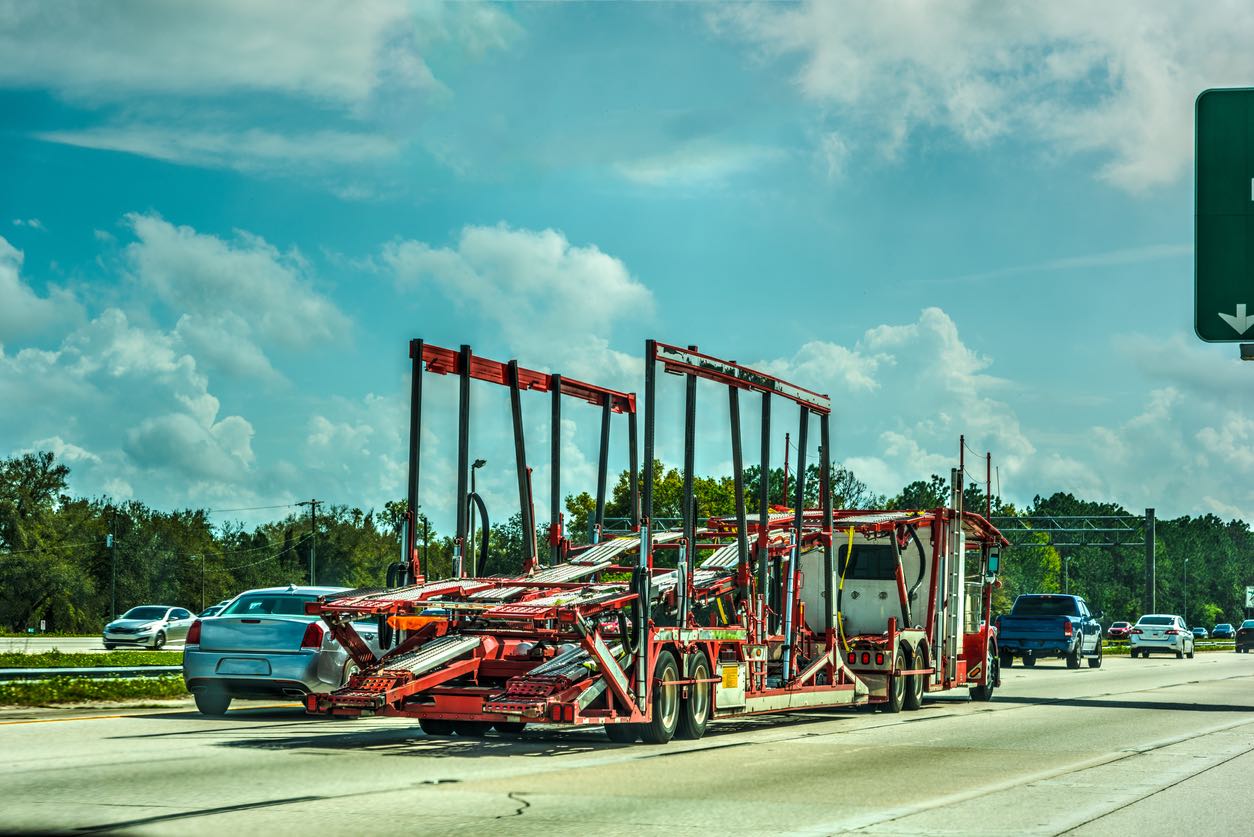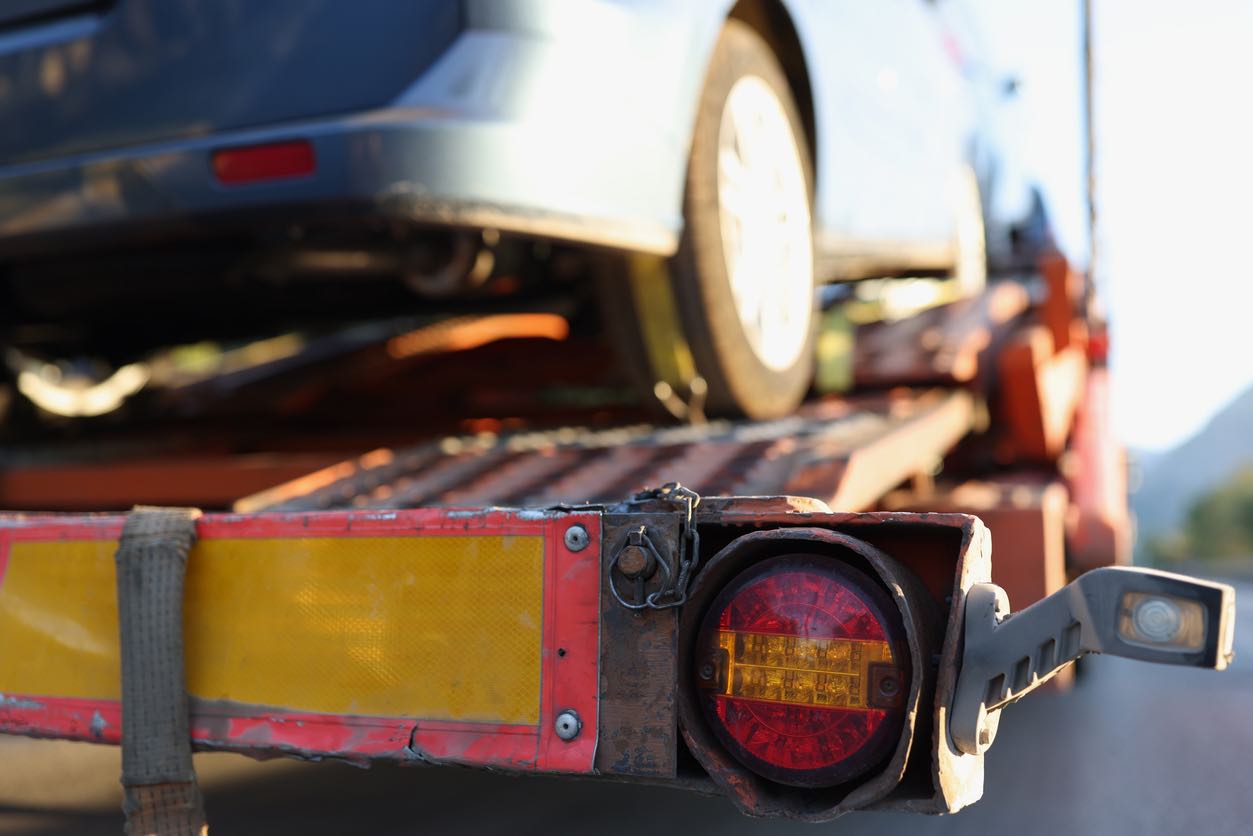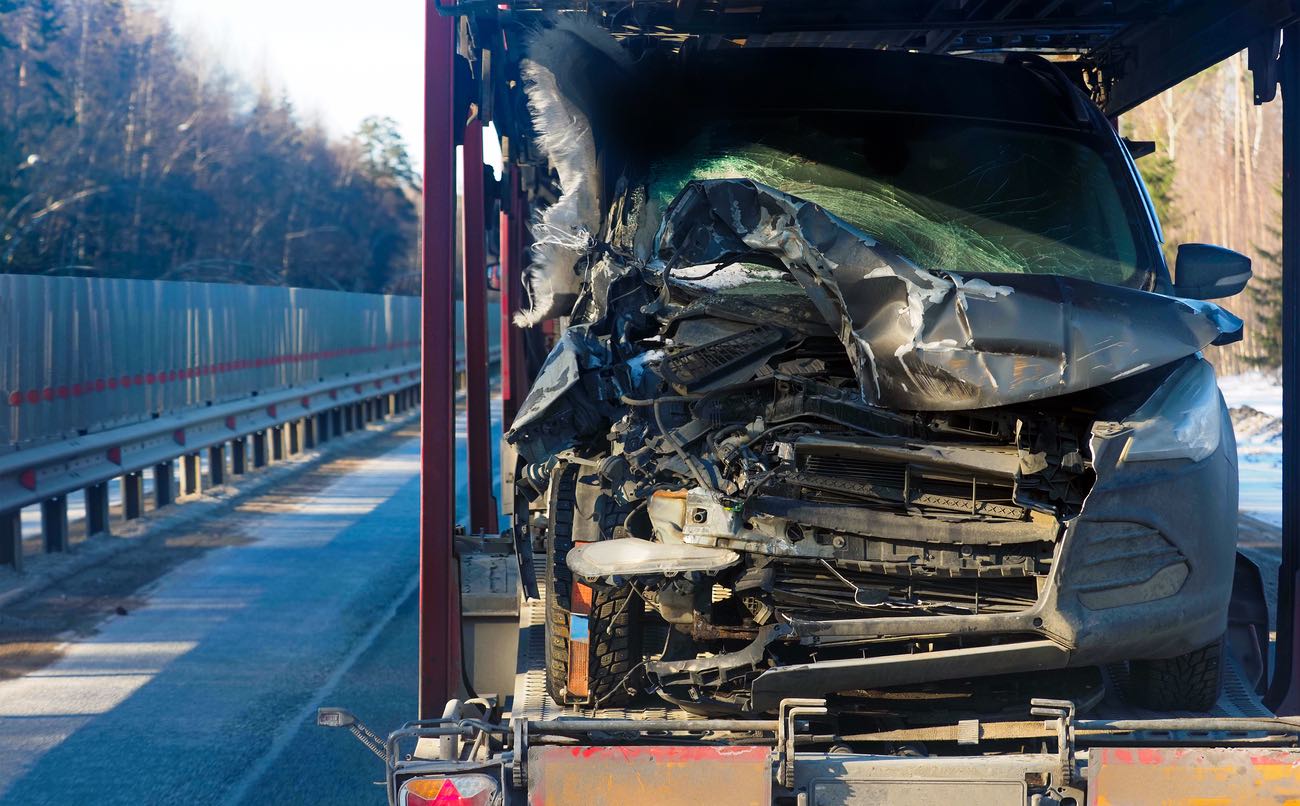Shipping a salvaged car is a particular challenge in the vast field of auto transportation. Although the process might appear simple at first, there are numerous complexities involved in moving a car with a salvaged title. Every step requires careful thought and planning, from comprehending what a salvaged title actually means to navigating the financial repercussions and selecting the best shipping option. A salvaged car may not just be a broken-down car to some people; it may also represent a project, an investment, or even a prized possession with a history.
With millions of vehicles changing hands and traveling across state lines annually, the American auto market is enormous. Salvaged cars make up a small but important portion of these. These vehicles frequently need to be transported to their next location, regardless of whether they were acquired at an auction, salvaged after an accident, or received them as a project. However, because of their special circumstances, they frequently raise a number of issues, such as how to transport a car safely if it isn’t running. Are there more expenses? Most importantly, how can you make sure the car arrives at its destination without suffering any more damage?
The purpose of this overview is to explain the salvage car shipping procedure within the United States. We aim to enlighten and direct vehicle owners by looking deeply into the nuances of salvaged titles, assessing the costs involved, and highlighting best practices. Whether you’re a seasoned auto enthusiast or someone who has recently purchased a salvaged vehicle, this overview will give you the information and insights you need to successfully negotiate the convoluted world of salvaged car transportation.

Salvaged car titles frequently conjure up pictures of wrecked cars, the aftermath of terrible accidents, or cars that are about to be written off. The truth, however, is much more complicated. The term “salvaged” covers a wide range of automobiles, from those with minor dings to those that have sustained serious damage. In the world of salvaged titles, damage assessment and economic factors interact, resulting in classifications that occasionally go against what is initially anticipated.
A salvaged title is fundamentally an indicator, a beacon illuminating a vehicle’s past. While many people might associate the term with significant damage, in reality, a salvaged title is frequently the result of financial considerations. It’s a term used when the cost of repairs is higher than average in relation to the car’s worth. Consider a luxury vehicle that has a small but costly repairable flaw, for instance. Even if the damage appears minor, the high cost of repairs could cause the car to be classified as “salvaged.” Therefore, this classification is not always an accurate representation of the car’s overall condition or ability to drive.
Myths abound in the automotive industry, and salvaged vehicles are no exception. A common misunderstanding is that a salvaged car equates to a wrecked or severely damaged car. Although reasonable, this belief doesn’t fully account for the situation. The decision to label a car as “salvaged” is influenced by a combination of structural and financial factors. Even with a salvaged title, a car may still be in excellent condition and purr like a kitten. Prospective buyers and those with an interest in the auto industry must look past the title and consider the vehicle’s background as well as the criteria used to classify it. The diverse range of vehicles that fall under the category of “salvaged” can only be fully appreciated at that point.

Understanding the financial ramifications of shipping a salvaged car is important in addition to ensuring its safe transportation. Depending on a number of variables, the cost of transporting a vehicle—especially one with a salvaged title—can vary greatly. While many people might believe that the entire process is simple, the truth is that the pricing structure is influenced by a wide range of factors, each of which has a significant impact on the total cost. This section digs deeply into cost dynamics, illuminating the key factors and providing a comparison of standard and salvaged shipping costs.
Each car is unique, and that includes the shipping price as well. The cost associated with transporting a vehicle is based on a number of factors. The type of vehicle is crucial, to start. Considering weight and space, a compact car may be less expensive to ship than a large SUV or a luxury car. Second, the state of the vehicle is very important. Even with a salvaged title, transporting a running vehicle may be simpler and less expensive than doing so for a non-drivable one. Specialized equipment is frequently needed to load and unload non-operational vehicles, which raises the cost. Finally, a significant factor is distance. Naturally, transporting a car across several states will cost more than a quick intrastate trip. The complexity of the route, potential tolls, and other logistical factors may also affect the final price.
One might assume that standard vehicles and those with salvaged titles would have comparable price tags when it comes to shipping. This isn’t always the case, though. Depending on the distance and type of vehicle, the cost of standard vehicle shipping can range from $500 to over $2,000. Salvaged vehicles, particularly those that aren’t roadworthy, present their own set of difficulties. These vehicles might require specialized tools or extra help when loading and unloading, which would raise the price by $50 to $150. However, not all is bad for owners of salvaged vehicles. The price difference between salvaged shipping and standard shipping decreases for shorter routes, particularly those under 500 miles. If you need to move your salvaged vehicles over shorter distances, this is a viable option because the transportation cost in these circumstances can be as affordable as $250–$500.

Transporting a salvaged car involves careful planning, comprehension, and the right decisions in addition to being a logistical challenge. With their distinctive past and potential weaknesses, salvaged cars require a different strategy than standard vehicles. Knowing the best procedures for moving your salvaged car can make all the difference, whether you’re a seasoned car enthusiast or someone who just bought one. The crucial elements of shipping a salvaged car are covered in this section, ensuring that your vehicle gets there quickly and safely.
Salvaged car transportation is a specialized job, and not all shipping companies are up to the task. Standard vehicles may be handled by many transporters, but salvaged cars, especially those that are not operable, present special difficulties. The ability to handle potential problems that might arise during transportation requires more than just having the appropriate equipment. Therefore, it’s crucial to make sure the transporter you choose has experience handling salvaged vehicles. Making an informed decision can be greatly improved by carrying out your due diligence, reading reviews, and contacting references.
Door-to-door delivery may initially appear to be an extravagance, but for salvaged vehicles, it is practically required. This recommendation was made primarily due to the difficulties involved in registering a salvaged vehicle. Before these vehicles can be legally driven, additional procedures, such as road tests, are frequently necessary. By choosing door-to-door delivery, you can avoid moving the car more than once and lower the risks that come with it. The benefits of this approach are further highlighted if your salvaged car is not in operable condition. Door-to-door transport makes sure that your vehicle is picked up from its present location and delivered directly to its final destination, ensuring safety, convenience, and peace of mind, as opposed to dealing with the difficulties of towing or the risks of self-hauling.

Finding your way around the world of salvaged cars can be challenging, especially for those unfamiliar with the idea. It’s simple to feel overburdened with the number of rules, definitions, and procedures to comprehend. But with the right tools, the path can be illuminated, offering direction and clarity. The resources listed below are essential tools for your journey, whether you’re looking to comprehend the complexities of salvaged titles or are looking for information on transporting non-operational vehicles.
There are many false beliefs and urban legends in the world of salvaged titles. Contrary to popular belief, a vehicle with a salvaged title is not necessarily beyond repair. In this area, knowledge truly is power. Researched articles like the one from Edmunds can be a great source of knowledge. These resources explain the standards that determine whether a car is classified as “salvaged.” Owners can make wise decisions and approach the sale, purchase, or transportation of such vehicles with assurance and clarity by being aware of the economic and damage-related factors that go into this designation.
Transporting a non-operational vehicle presents a special set of difficulties. These vehicles cannot simply be driven onto a transport truck, unlike their running counterparts. They need specialized tools, knowledge, and tender loving care. If your salvaged vehicle fits this description, having the appropriate knowledge is crucial. It’s important to know the nuances of shipping non-operational vehicles in order to protect your investment as well as to ensure a smooth transport process. A thorough understanding of the particulars of transporting non-operable vehicles can help owners save time and money and ensure that their vehicle arrives at its destination in the best possible condition. This may include choosing the best shipping partner, comprehending the associated costs, or being aware of any potential risks.

It takes skill to ship a salvaged car because it involves a delicate dance between the complexities of logistics and the subtleties of vehicle titles. Shipping a salvaged car involves more than just moving a car from point A to point B. With its wide expanse and diverse topography, the United States poses its own set of difficulties for the transportation of vehicles, particularly those with salvaged titles. These vehicles need a special touch, a deeper understanding, and a higher level of care because they frequently bear the scars of their past. It’s not just about cost or speed; it’s also about giving a vehicle, which may have already encountered a few difficulties, the respect and care it deserves.
A salvaged car’s journey from its starting point to its destination is rife with dangers. Every step of the process necessitates meticulous planning and execution, from regulatory obstacles to logistical difficulties. However, these difficulties can be easily overcome with the proper knowledge and preparation. Understanding the special characteristics of salvaged titles, being aware of the costs involved, and, most importantly, selecting a partner who can lead you through the maze are the keys. Making well-informed choices that put the car’s safety and wellbeing first will help it get where it needs to go in the best possible shape.

Many businesses in the transportation of vehicles make lofty promises but only deliver the stars. However, Ship A Car has consistently demonstrated why it is the industry leader, particularly when it comes to moving salvaged cars. In addition to making promises, they have a track record of excellence. They have distinguished themselves in the industry with a team of specialists who are familiar with the nuances of salvaged vehicles, cutting-edge machinery built to handle the particular difficulties these vehicles present, and a dedication that goes beyond words.
But why should you trust Ship A Car, Inc. with your possession—your salvaged car? Their unwavering commitment to client satisfaction holds the key. They understand that each salvaged vehicle has a history and a unique story to tell. Additionally, they give each vehicle the particular consideration and care that it needs. Your vehicle, whether it is salvaged or not, will be transported with the utmost care and will reach its destination in immaculate condition thanks to their seamless shipping experience. Therefore, there is no need to look further if you’re looking for a partner who provides more than just transportation, if you’re looking for a group that offers peace of mind. Make the first move toward a simple, seamless shipping experience by selecting Ship A Car, Inc. Nothing less is worthy of your salvaged vehicle.
1. Can any shipping company transport a salvaged car?
No, not all shipping companies are equipped or willing to transport salvaged cars, especially if they’re non-operable. It’s essential to select a transporter with the necessary equipment and expertise.
2. Why is door-to-door transport recommended for salvaged cars?
Door-to-door transport minimizes risks associated with additional registration steps for salvaged vehicles, which often include a road test. It’s especially crucial for non-operable cars to avoid towing or self-hauling.




